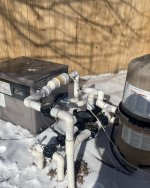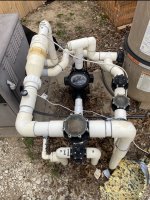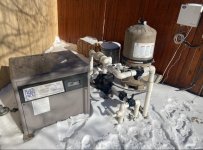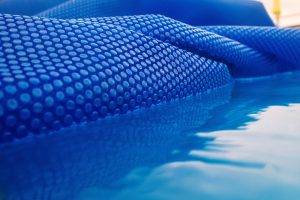So I’m relatively new to pools as I bought my house that already had a pool a year ago. Today I had a leak detection done and they found a leak but they also told me one of my check valves needed to be replaced. Said it was just something they noticed and wasn’t a cause for the leak. Nevertheless I’ve been racking my brain about why my pool equipment is laid out the way it is. The check valve that needs to be replaced is the one next to the filter.
The part I don’t get is why is there a diverter valve and check valve that connects to the suction side before it gets to the filter and then connects on the other side to the return line. In most other pool setups I’ve seen there is no such connection. Why wouldn’t the pump just connect to the filter without this pipe, diverter, and check valve. Also what is the diverter even diverting here? I’m just confused and any insight would greatly be appreciated.
Thanks
The part I don’t get is why is there a diverter valve and check valve that connects to the suction side before it gets to the filter and then connects on the other side to the return line. In most other pool setups I’ve seen there is no such connection. Why wouldn’t the pump just connect to the filter without this pipe, diverter, and check valve. Also what is the diverter even diverting here? I’m just confused and any insight would greatly be appreciated.
Thanks





